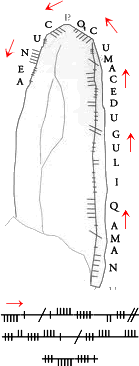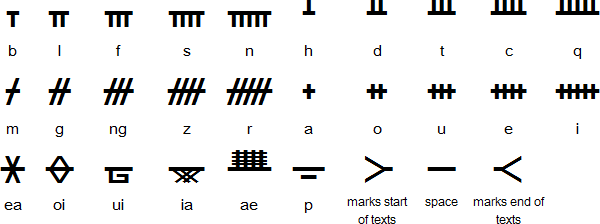With St Patrick’s Day a few weeks behind us and March drawing to a close, we felt it only fitting that we feature Irish as the language of the month. The story of the Irish language, much like that of the Irish people, is both long and fascinating, and I hope to do it justice.
In English, it is most commonly called Irish, but may also be called Gaelic or Irish Gaelic; in Irish, it is called Gaeilge. It is split into three main dialects: Connacht, Munster, and Ulster. While Irish is the first official language of the Republic of Ireland, a country of 5 million people, there are only 1.76 million speakers of Irish there today, and only 73 thousand speak it daily. Irish does not have official status as such in Northern Ireland, but around 11% of the population claim to have some knowledge of the language with 6% indicating that they can speak it.
The Irish language spoken today is the direct descendant of the languages spoken by Celtic peoples thought to have arrived in Ireland from the La Tène region of France as early as 2500 years ago. Irish is a member of the Goidelic group of the Celtic languages, and thus is an Indo-European language. Its closest cousins, Scottish Gaelic and Manx, have their origins in speakers of Old Irish who had settled in Scotland and the Isle of Man by the 10th century CE.
Between the 4th and 6th centuries CE, what scholars call “Primitive Irish” was being inscribed into monuments all across the British Isles using the Ogham script. Irish consequently has one of the oldest literary traditions in Western Europe. The Ogham script, pronounced [ˈoːm] or [ˈoːəm] in Modern Irish, is alphabetic, and each character is written by making marks in a continuous line. Here is an example found on a stone from County Waterford in the Republic of Ireland:
 |  |
The inscription reads Na Maqi Lugudeca Muc Cunea, which translates to “The Sons of Lugudeca, Son of Cunea”. Perhaps this monument marked a property owned by Lugudeca’s sons, or even their graves. Most Ogham inscriptions similarly contain only names.
Irish would continue to be the primary language of Ireland for over a millennium until its decline between the 17th and 20th centuries. Humanity’s long history of conquest and occupation has led countless languages to lose prestige, and under English rule, Irish was no exception. English was instituted as the nation’s administrative language and the language of the Roman Catholic church. Famine and migration disproportionately affected the largely Irish-speaking lower class, leading to a further decline in L1 Irish speakers.
Things began to look up for Irish with the founding of the Republic of Ireland in 1922. Irish was finally adopted as an official language by the government alongside English. Similarly, the Irish language in Northern Ireland gained recognition through legislation such as the St Andrew’s Agreement of 2006. Throughout the 20th and 21st centuries, a popular revitalization movement has evolved in both Northern Ireland and the Republic of Ireland. Today, the language is both a point of pride and an area of contention depending on your political views. Either way, though, Irish is a shining example of a success story in language revitalization on both sides of the Irish border.
For a more thorough exploration of the history of the language use in Ireland and elsewhere, see our recent speaker presentation, “The Impact of Migration on Language Ecologies: An Irish Perspective” with friend of the museum Karen Corrigan at the University of Newcastle. Special thanks to her for her help with this article!
Sources/Further Reading:
Irish language, alphabet and pronunciation
Ogham alphabet
Irish language – Wikipedia
History of the Irish language – Wikipedia
Linguistic Communities and Migratory Processes

